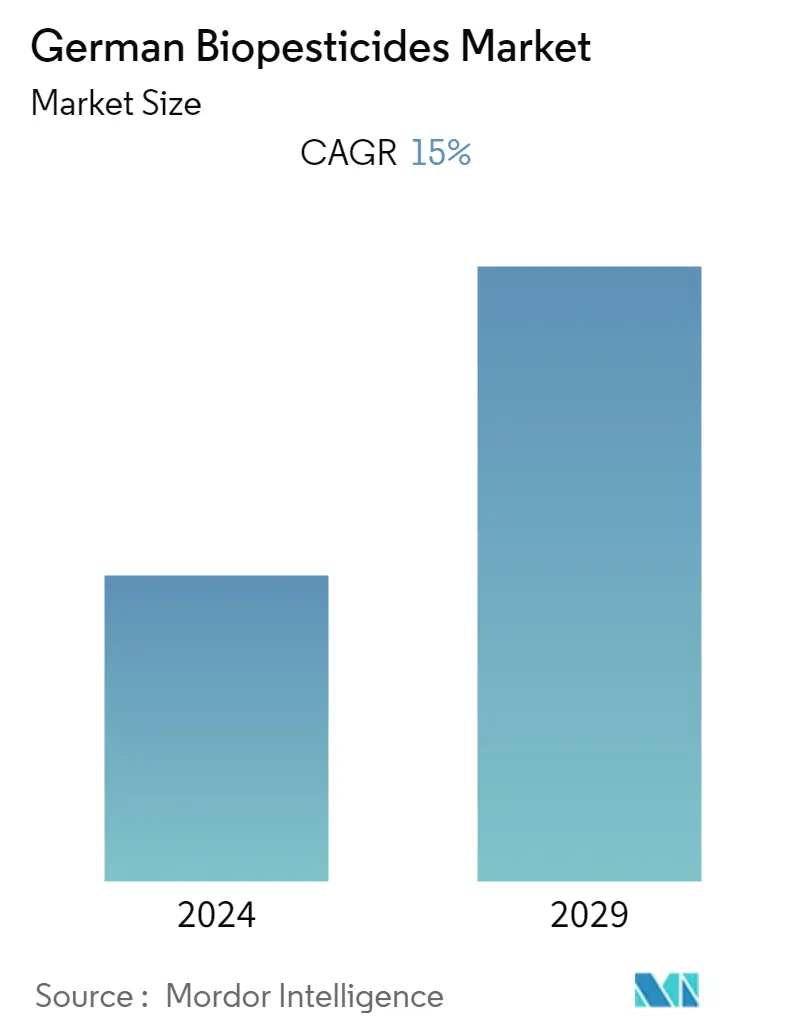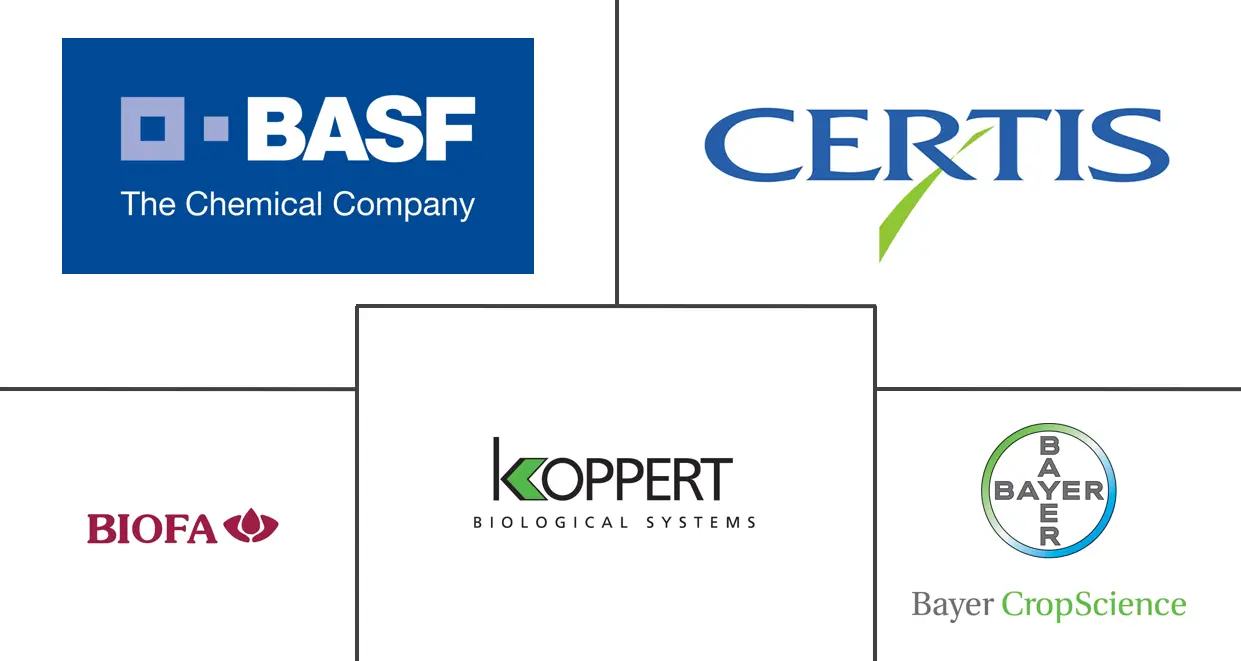Market Size of German Biopesticides Industry

| Study Period | 2019 - 2029 |
| Base Year For Estimation | 2023 |
| Forecast Data Period | 2024 - 2029 |
| Historical Data Period | 2019 - 2022 |
| CAGR | 15.00 % |
Major Players
*Disclaimer: Major Players sorted in no particular order |
Germany Biopesticides Market Analysis
The German Biopesticide Market is projected to attain a CAGR of 15% during forecast period of 2020-2025. In the European region, Germany is the fastest growing market for biopesticides. According to EPA, biopesticides are certain type of pesticides, derived from such natural materials as plants, bacteria and certain minerals. They help in controlling pests through non-toxic mechanisms. The increased demand for naturally obtained healthy foods has fuelled the market opportunities for biopesticides. The action plan to ban chemicals like glyphosate by end of 2023 by Germany will boost the growth of biopesticide market. The implementation of Integrated Pest Management by European Union has been an advantage for biopesticide market. IPM focuses on reducing the use of toxic mechanisms to control pests and depend on the natural pest control mechanisms without any disruption to the agro-ecosystems. Germany is the largest organic food market, and this has contributed to the growth of biopesticides as more people are focusing on health now. the market does face restraints of low shelf life of products and high target pest specificity. With more concentration on research and development for producing high quality microbials in this segment the market can overcome these restraints.
Germany Biopesticides Industry Segmentation
The German Biopesticide Market is segmented by Type (Bioherbicides, Bioinsecticides, Biofungicide and others) and By Application (Crop-based and Non-crop based). In Crop-based, grains and cereals, oil seeds and fruits and vegetables are studied and in no-crop based, turf and ornamental grass and others are studied. The study presents a thorough analysis of the competitive landscape. The main market drivers and restraints in the industry was assessed to comprehend their impact during forecast period.
| Type | ||||||
|
| Application | |
| Crop-Based | |
| Non-Crop Based |
German Biopesticides Market Size Summary
The German biopesticide market is experiencing rapid growth, positioning itself as the fastest-growing market for biopesticides in Europe. This growth is driven by the increasing demand for naturally derived healthy foods and the government's action plan to ban chemical pesticides like glyphosate by the end of 2023. Biopesticides, derived from natural materials such as plants, bacteria, and minerals, offer non-toxic pest control solutions, aligning with the European Union's Integrated Pest Management (IPM) strategy. This strategy emphasizes reducing toxic pest control methods and leveraging natural mechanisms, which has been beneficial for the biopesticide market. Germany's status as the largest organic food market further fuels this growth, as consumers increasingly prioritize health and sustainability. Despite challenges such as the low shelf life of biopesticides and high target pest specificity, ongoing research and development efforts aim to enhance the quality and efficacy of microbial products in this sector.
The shift towards organic farming in Germany is supported by government initiatives promoting the use of biopesticides, encouraging farmers to adopt sustainable farming practices. The federal structure's regional regulations and the government's financial support for biocontrol products have facilitated this transition. Concerns about environmental impact and human health hazards associated with synthetic pesticides have led to stricter European Union regulations, aligning with the objectives of the 7th Environment Action Programme. The reduction in pesticide sales and the impending glyphosate ban are indicative of the positive impact of these policies, promoting biopesticide adoption. The market is characterized by intense competition among local and global players, such as Bayer Crop Science, BIOFA, BASF, Certris Europe, and Koppert Biological Systems, who are investing in research and development to introduce innovative biopesticide products.
German Biopesticides Market Size - Table of Contents
-
1. MARKET DYNAMICS
-
1.1 Market Overview
-
1.2 Market Drivers
-
1.3 Market Restraints
-
1.4 Porters Five Force Analysis
-
1.4.1 Threat of New Entrants
-
1.4.2 Bargaining Power of Buyers/Consumers
-
1.4.3 Bargaining Power of Suppliers
-
1.4.4 Threat of Substitute Products
-
1.4.5 Intensity of Competitive Rivalry
-
-
-
2. MARKET SEGMENTATION
-
2.1 Type
-
2.1.1 Biopesticides
-
2.1.1.1 Bioherbicides
-
2.1.1.2 BioInsecticides
-
2.1.1.3 BioFungicide
-
2.1.1.4 Others
-
-
-
2.2 Application
-
2.2.1 Crop-Based
-
2.2.2 Non-Crop Based
-
-
German Biopesticides Market Size FAQs
What is the current German Biopesticides Market size?
The German Biopesticides Market is projected to register a CAGR of 15% during the forecast period (2024-2029)
Who are the key players in German Biopesticides Market?
BIOFA, Certris Europe, BASF, Bayer Crop Science and Koppert Biological Systems are the major companies operating in the German Biopesticides Market.

